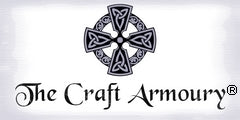Stainless Steel FAQs
Why choose stainless steel?
Stainless steel offers some of the best value for money available when it comes to jewellery findings, due to its strength, durability and versatility. It is highly resistant to many issues that affect other base (or even precious) metals, such as tarnish and corrosion, and will last a lifetime if cared for (sometimes even if not!) The increasing popularity of stainless steel jewellery means that the range of findings available is getting bigger and more diverse day by day.
Is stainless steel nickel free?
In general, no. Stainless steel is designed for strength and durability, with its high resistance to corrosion being one of its primary attributes, and nickel is a key element in the alloy that helps provide this. Although stainless steel can be made without nickel, it is fairly uncommon, and most stainless steel will contain between 8% - 12% nickel (the higher the grade, on average the higher the nickel content).
What about surgical steel?
This will also contain nickel - in fact, stainless steel can't be classed as a surgical grade without it. 'Surgical' steel is actually just a trade name for stainless steel of particular grades (also known as 'marine grade' steel). The most common available 'surgical' grades are 316 and 316L (the L is to indicate a lower carbon content). This grade of steel is designed to have the highest resistance to corrosion, therefore it also tends to have a higher nickel content (up to 12%).
Is stainless steel hypoallergenic?
Technically, stainless steel can qualify as hypoallergenic (meaning: low risk of causing an allergic reaction), as although nickel is one of the most common causes of allergic reactions from jewellery, it is bonded to other elements in the alloy and generally won't leech on to the skin. However, some people with a high sensitivity to nickel can still have a reaction to stainless steel, so I do not personally classify it as hypoallergenic.
What grade of steel are the items in the store?
I offer products in a range of different grades, but the most common is 304. I also have products in 201, 202, 316 and 316L grades - you'll find the grade for each item is listed in each description, so you can make an informed decision about the products.
What are the differences between the grades?
Each grade of steel has differences between the elements used to make them. It's important to note that higher grades do not mean better quality, rather that each grade (or series, as there will generally be a range of grades within a particular series) is designed to be best suited for different uses and applications.
201 grade steel has a lower nickel and higher manganese content, it is also harder and stronger. Products in the store that are often made from 201 steel include thin filigree stampings, and some of the blank tags.
304 grade steel is a versatile and general purpose steel, and is widely used for many products - most of the items I currently sell are made with this grade. It will contain an average of 8% nickel, and provides all of the most desired attributes for stainless steel.
316 grade steel is very similar to 304, but molybdenum is added to increase the metal's resistance to corrosion, particularly due to salt water or chlorine exposure. This grade is often used for body jewellery since such items may be worn 24 / 7 in a variety of conditions.
Are the stainless steel items magnetic?
No, the stainless steel grades used for findings are typically austenitic, while magnetic steel is ferritic or martensitic (these terms refer to the composition or crystalline structure of the steel, which is primarily determined by the elements added to the alloy). Ferritic and martensitic steels are less suitable for jewellery & findings due to being more susceptible to issues like rust and corrosion.
